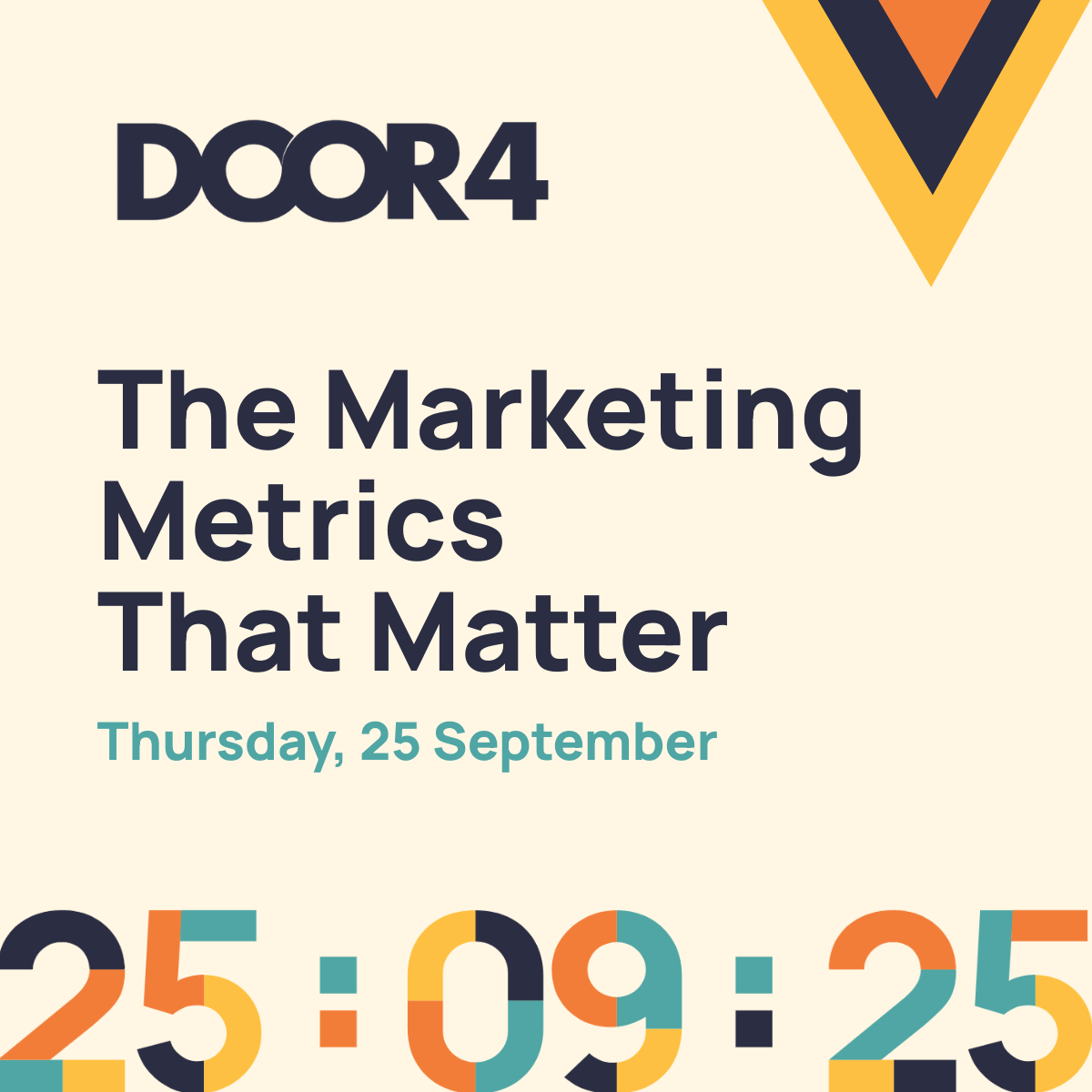Ready to explore the possibilities?
Request a quick call with our team to find out how the Innovation Explorer program can help your business take its next big leap into AI and automation.

Centralised Systems and the Cost of Doing Nothing: What Makes a Useful System Architecture
Legacy platforms. Stitched-together plugins. Multiple systems that almost talk to each other. For many e-commerce businesses, the tech stack has quietly become the bottleneck.
And yet, nobody’s touching it.
There’s always a reason to delay – too costly, too complex, too many other priorities. But here’s the reality: the cost of doing nothing is often greater. Fragmented systems don’t just create inefficiencies; they hold back performance, blur data visibility, and make it harder to scale marketing efforts with confidence.
If you’re a senior marketer responsible for growth, now’s the time to understand what a centralised system really means — and why it matters commercially, not just technically.
What a “centralised” system actually means — and why marketers should care
Let’s cut through the jargon.
A centralised system isn’t a monolith. It’s not about putting every process into one platform. It’s about cohesion, ensuring your tech stack is designed to enable smooth flow of data, content, and customer insight across every team and channel.
In practice, this often means:
- A single source of truth for product, customer, and order data
- Unified content management (no more uploading images 3 times in 3 different formats)
- Proper integration between CRM, email, ecommerce platform, and analytics
- Clear, consistent attribution and performance reporting
The goal? To reduce duplication, increase speed to market, and give marketing teams the confidence to launch campaigns, personalise experiences, and optimise spend, without tech getting in the way.
The hidden cost of patchwork platforms
Most brands don’t set out to build a messy tech stack. It happens over time.
A third-party plugin gets added to solve a quick problem. A middleware tool is bolted on to connect two systems. Then the ecommerce platform gets “customised” beyond recognition — and suddenly, updating a single product description takes 4 steps and three different people.
Common signs your system is working against you:
- Slow campaign launches due to clunky workflows
- Inaccurate or conflicting performance data
- Difficulty running segmented campaigns or personalisation
- Rising customer acquisition costs with no clear fix
- Reluctance from the dev team to “poke the beast”
We’ve seen this countless times, and the impact is rarely isolated. It affects media performance, UX, and team morale.
Why the “do nothing” approach often costs more
It’s easy to assume that delaying system investment is the more cautious choice. But inaction creates risk, too… commercial risk.
Delayed campaign execution, wasted media budget due to poor attribution, and manual workarounds all add up quickly. Add to that the damage from inconsistent customer experiences and the struggle to retain tech talent who don’t want to work with outdated systems, and the real cost of doing nothing becomes painfully clear.
And importantly, the longer you wait, the harder it is to unravel. Your internal knowledge holders move on. Technical debt grows. And your competitors pull ahead with systems that let them react faster and scale more efficiently.
What good architecture looks like
Case study: Replatforming for growth — without disruption
A heritage homeware brand we worked with was struggling to manage seasonal product updates across multiple CMS instances. Their e-commerce site, blog, and landing pages all ran separately, causing duplicated work and frequent errors during campaign launches.
We helped them replatform to a modern headless CMS and integrated their PIM (Product Information Management) system, enabling them to update content once and publish everywhere.
Result: Campaign launch times were cut in half. ROAS on paid social improved by 26% due to faster, more accurate product updates. And their internal team could finally focus on strategy, not firefighting.
Why this matters even more in home & garden sectors
Brands in this space face some unique challenges:
- Seasonality: Product demand peaks and troughs dramatically. You need systems that allow fast content changes, agile campaign execution, and clear performance reporting — or you miss the moment.
- Complex product ranges: Furniture, tools, furnishings — each has different attributes, specs, and customer journeys. Centralised product data makes it easier to surface the right info across channels.
- Multi-channel sales: E-commerce, marketplaces, in-store, and each channel needs to pull from the same data set to avoid confusion or misalignment.
- Lifecycle marketing: Customers don’t buy garden furniture every week. You need long-term CRM strategies supported by a system that holds consistent data over time.
If your systems can’t keep up with those realities, your marketing efforts will always feel heavier than they should.
How to tell if your system is helping or hindering
You don’t need to be a technical architect to spot the warning signs. Ask yourself:
- How long does it take to launch a campaign with new products and offers?
- Can I access accurate, real-time performance data without multiple spreadsheets?
- Are my team using their time strategically, or are they stuck on manual tasks?
- Do we hesitate to change things on the website because we’re not sure what might break?
- Are we reliant on one or two people who “just know how it works”?
If more than one of those rings true, it’s worth taking a step back.
What to do next, without triggering a total rebuild
You don’t need to rip everything out and start again. In fact, most of our clients succeed with a phased approach. But you do need to get clear on:
- What’s working
- What’s holding you back
- What future growth needs to be supported
Start by mapping your current ecosystem: platforms, tools, data flows, and team processes. Identify duplication, bottlenecks, and black holes. Then prioritise changes based on commercial impact, not just technical neatness.
If you’re not sure where to start, let’s talk. We’ll help you assess your current systems, spot the quick wins, and plan for long-term performance.
Centralised systems aren’t about ticking a tech box. They’re about enabling your brand to reach, convert, and scale — without your stack slowing you down.
-
 04.03.2025|Before diving into A/B testing, strong foundations in development and QA ensure reliable results. From defining objectives to monitoring hidden impacts, a well-structured approach turns experiments into meaningful insights.
04.03.2025|Before diving into A/B testing, strong foundations in development and QA ensure reliable results. From defining objectives to monitoring hidden impacts, a well-structured approach turns experiments into meaningful insights. -
 28.11.2024|By transitioning from monolithic applications to a microservices architecture, businesses can improve scalability, enhance operational efficiency, and seamlessly integrate with Generative AI for optimised customer interactions. As the market becomes ever more dynamic, could microservices be the key to unlocking your business's potential?
28.11.2024|By transitioning from monolithic applications to a microservices architecture, businesses can improve scalability, enhance operational efficiency, and seamlessly integrate with Generative AI for optimised customer interactions. As the market becomes ever more dynamic, could microservices be the key to unlocking your business's potential? -
 04.07.2024|Reallocating budgets isn’t always straightforward, but it can be essential for progress. Door4's recent re-platforming of Plumbs' site is a masterclass in strategic investment for long-term gains.
04.07.2024|Reallocating budgets isn’t always straightforward, but it can be essential for progress. Door4's recent re-platforming of Plumbs' site is a masterclass in strategic investment for long-term gains.
We have a lot to talk about.
ScrapbookDoor4 opinions and insight - our articles features and ramblings.
We explore performance marketing, AI, communications and optimisation.















